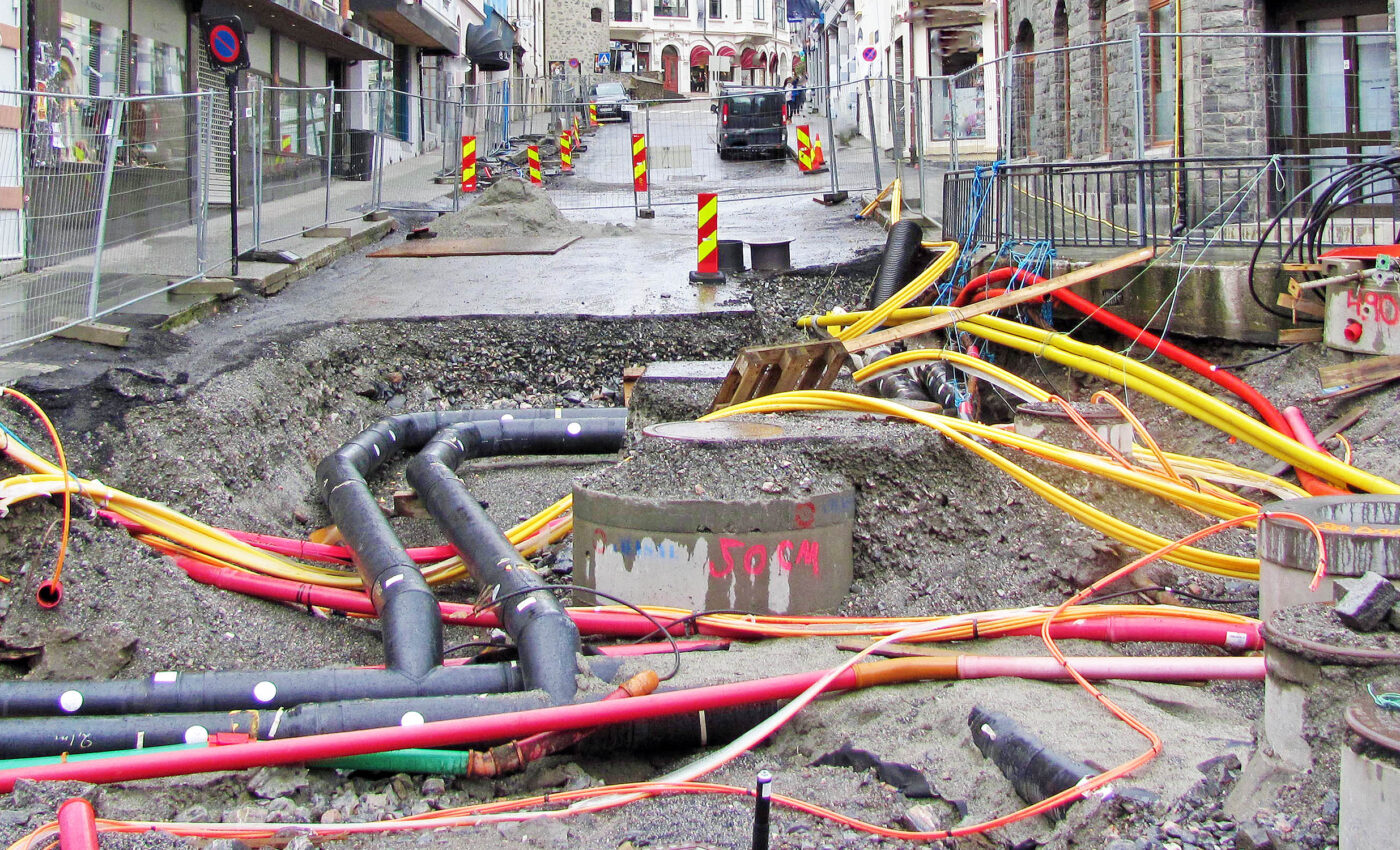
Rising sea levels threaten global cities' underground infrastructure
A recent study has exposed a critical vulnerability within coastal cities around the world. Rising sea levels are transforming groundwater, making it shallower, saltier, and corrosive.
This slow and steady destruction poses a significant threat to the vast networks of buried city infrastructure that support modern urban living.
Saltier city groundwater from rising sea levels
Groundwater is the water that exists beneath the Earth’s surface, filling the cracks and spaces between soil, sand, and rock. In coastal areas, it plays a vital role in the environmental balance.
As sea levels rise, they exert more pressure on the coastal groundwater system. This pressure pushes the groundwater upwards, making it shallower (closer to the surface).
Seawater is naturally salty. As the groundwater is forced upwards, it mixes with the encroaching seawater, becoming increasingly saltier.
Saltwater is highly corrosive to many of the materials we use for underground infrastructure. The saltier the groundwater becomes due to rising sea levels, the faster it can damage city structures.
Impact on modern cities
Modern cities have vast networks of buried infrastructure – pipes for water and sewage, foundations for buildings, tunnels for transport, electrical cables, and more.
This infrastructure was mostly built assuming a stable groundwater environment. Shallower, saltier, corrosive groundwater creates conditions it wasn’t designed to withstand.
The corrosive groundwater can weaken foundations, cause pipes to leak and burst, and create electrical problems. This leads to costly repairs, public health risks due to contamination, and major disruptions to city life.
“While it has been recognized that shallowing groundwater will eventually result in chronic flooding as it surfaces, what’s less known is that it can start causing problems decades beforehand as groundwater interacts with buried infrastructure,” said Shellie Habel, coastal geologist at the University of Hawai’i at Mānoa.
Here’s the shocking part: the damage starts long before the city streets are flooded by rising sea levels. The changing groundwater attacks our sewer lines, building foundations, roads, and everything else buried below ground. This leads to leaks, cracks, and major malfunctions that can cripple a city.
Current impact of rising sea levels on cities
Scientists at the University of Hawai’i have revealed just how widespread this problem is. The study revealed that over 1,500 major cities worldwide are already experiencing the negative impacts of rising coastal groundwater. This shows that this is not an isolated problem but one that affects urban areas across all continents.
The really worrying part is that over a billion people live in these impacted cities. That means a huge portion of the world’s population is at risk of dealing with the consequences of damaged infrastructure, disrupted services, and potential health hazards.
While many people are aware of the visible dangers of sea level rise, like coastal flooding, the hidden threat to underground infrastructure frequently flies under the radar. This study highlights the urgency of the problem.
The study emphasizes that this isn’t some distant future problem. These cities are already facing the consequences, meaning we need to take this seriously and start addressing it proactively.
Saving coastal cities from rising sea levels
“The IPCC 6th Assessment Report tells us that sea level rise is an unstoppable and irreversible reality for centuries to millennia,” said Chip Fletcher, study co-author and director of the Climate Resilience Collaborative at the University of Hawai’i.
“Now is the time to prepare for the challenges posed by this problem by redesigning our communities for greater resilience and social equity.” Potential measures include:
Early warning systems
Changes in groundwater can be subtle and difficult to detect with the naked eye. Imagine a network of advanced sensors buried underground, constantly monitoring groundwater levels, salinity, and chemical composition.
These sensors could provide early warnings of escalating problems. Instead of reacting to a cracked pipe or a flooded basement, city planners and engineers would have time to take preventative action – reinforcing structures, rerouting systems, or implementing targeted repairs.
Super materials
Consider developing new concrete types that resist saltwater corrosion longer. Imagine metal pipes with coatings that prevent rust and leaks, even in salty groundwater.
These super materials would allow us to build new infrastructure designed to last decades or even centuries in the changing coastal environment. It means less frequent repairs, fewer disruptions, and more resilient cities overall.
Reimagining city design
We could gradually relocate our most vulnerable infrastructure, like electrical substations or wastewater treatment plants, to higher ground. Alternatively, we could redesign them to operate in partially flooded conditions.
Some cities might explore innovative ways to embrace a wetter future. Think about floating structures, canals instead of some roads, and buildings designed to withstand occasional flooding.
While the challenge posed by rising groundwater due to sea levels rise is significant, it’s crucial to remember that human ingenuity and innovation can pave the way for city solutions.
Scientists and engineers aren’t just identifying the problem, they’re actively pursuing strategies to help our cities adapt and thrive in a changing world.
The next time you walk down a city street, remember there’s a whole world beneath your feet – and it’s under attack. It’s a problem we can’t ignore anymore. By understanding the threat and supporting innovative solutions, we can build cities that are resilient in the face of rising seas.
The study is published in Annual Review of Marine Science.
—–
Like what you read? Subscribe to our newsletter for engaging articles, exclusive content, and the latest updates.
Check us out on EarthSnap, a free app brought to you by Eric Ralls and Earth.com.
—–













